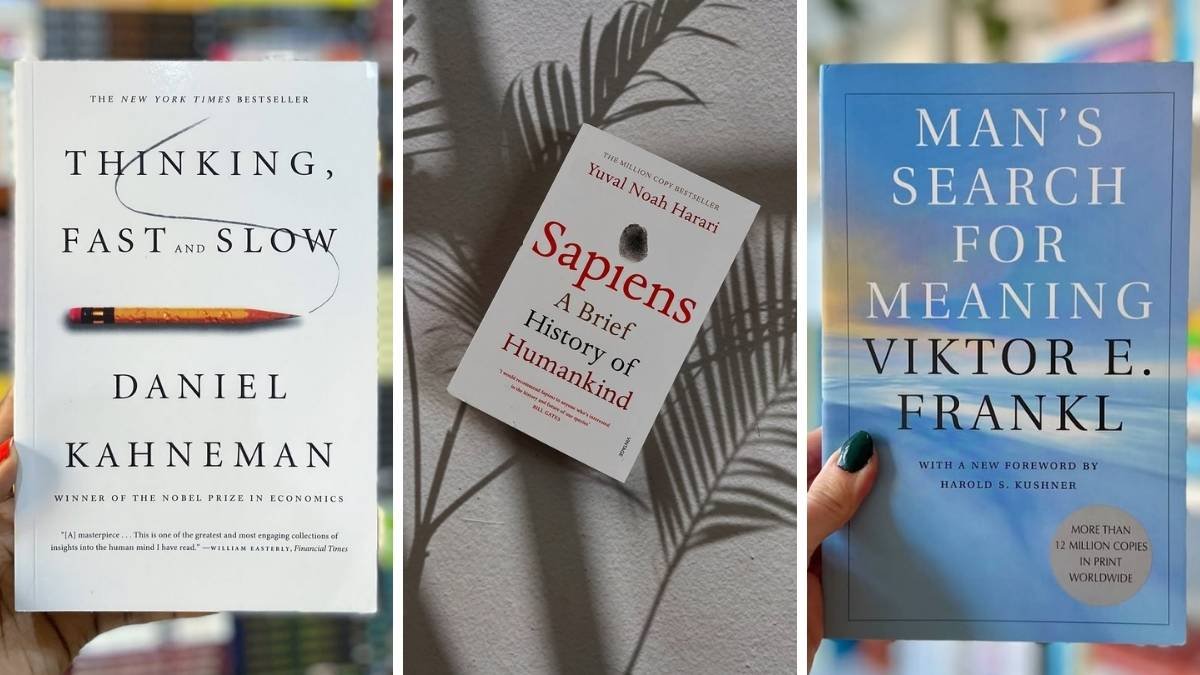
Science fiction has long been a window into our potential futures, offering visions that are both cautionary and inspiring.
Some of these narratives have eerily anticipated technological advancements and societal shifts, making their stories resonate even more today.
Let’s delve into five seminal sci-fi books that not only predicted aspects of our present but also continue to captivate readers with their foresight and imagination.
“1984” by George Orwell

Published in 1949, “1984” presents a dystopian society under the omnipresent surveillance of “Big Brother.” Orwell’s depiction of a world where truth is manipulated and individualism is suppressed has become a chilling reflection of contemporary concerns about privacy and governmental overreach. The novel’s concepts, such as “doublethink” and “newspeak,” highlight the power of language in shaping reality, underscoring the importance of critical thinking in the face of propaganda.
What makes “1984” particularly prescient is its anticipation of modern surveillance technologies. The idea of being constantly watched resonates in an age where digital footprints are meticulously tracked. Orwell’s work serves as a stark reminder of the delicate balance between security and freedom, urging readers to remain vigilant against the erosion of civil liberties.
“Brave New World” by Aldous Huxley

Aldous Huxley’s “Brave New World,” published in 1932, envisions a society driven by consumerism, technological control, and genetic engineering. In this world, humans are artificially created and conditioned for predetermined roles, eliminating personal ambition and conflict. The populace is kept placid through a drug called “soma,” reflecting concerns about reliance on substances to maintain societal order.
Huxley’s foresight into genetic manipulation and the pursuit of happiness through artificial means mirrors today’s debates on bioethics and the pharmaceutical industry’s influence. The novel challenges readers to consider the cost of a seemingly perfect society and the value of individuality in a homogenized world.
“Fahrenheit 451” by Ray Bradbury

In “Fahrenheit 451,” published in 1953, Ray Bradbury introduces us to a future where books are banned and “firemen” burn any that are found. This society prioritizes superficial entertainment over critical thought, leading to widespread conformity and ignorance. Bradbury’s work explores themes of censorship, the loss of intellectual freedom, and the consequences of an unengaged populace.
The novel’s portrayal of wall-sized televisions and immersive media experiences eerily predicts today’s entertainment landscape, where screens dominate daily life. “Fahrenheit 451” is a cautionary tale about the dangers of losing oneself in passive consumption and the vital importance of literature and critical discourse in maintaining a vibrant, informed society.
“Neuromancer” by William Gibson

Published in 1984, William Gibson’s “Neuromancer” is a cornerstone of the cyberpunk genre, introducing concepts like cyberspace and virtual reality. The novel follows a washed-up computer hacker hired for a final job, navigating a world where corporate dominance and digital landscapes blur the lines between reality and artificial constructs.
Gibson’s vision anticipated the rise of the internet and the complexities of a connected world. His depiction of a digital realm where information is currency resonates strongly today, as society grapples with cybersecurity, digital identity, and the ethical implications of artificial intelligence.
“Stand on Zanzibar” by John Brunner

John Brunner’s 1968 novel “Stand on Zanzibar” portrays a world overwhelmed by overpopulation, where societal structures are strained, and individuals struggle for identity amidst the masses. The narrative is fragmented, reflecting the chaotic information overload experienced by its characters, and touches on themes like eugenics, corporate control, and social fragmentation.
Brunner’s work is notable for predicting various aspects of modern life, including the proliferation of mass media, the normalization of violence, and the influence of multinational corporations on daily existence. The novel’s structure and content challenge readers to reflect on the trajectory of societal development and the potential consequences of unchecked population growth and technological advancement.
“Parable of the Sower” by Octavia Butler

Octavia Butler’s 1993 novel “Parable of the Sower” envisions a near-future America ravaged by climate change, economic instability, and social chaos. The story follows Lauren Olamina, a young woman with the ability to feel others’ pain, as she embarks on a journey to establish a new belief system, “Earthseed,” aiming to lead humanity toward a more hopeful future.
Butler’s portrayal of a society grappling with environmental disasters and societal collapse mirrors current concerns about climate change and social inequality. Her exploration of resilience and adaptability in the face of adversity offers a profound commentary on human nature and our capacity for change.
“The Shape of Things to Come” by H.G. Wells

H.G. Wells’ 1933 novel “The Shape of Things to Come” presents a speculative history of the early 20th century, predicting events such as global conflicts, the rise of air power, and the development of weapons of mass destruction. Wells imagines a post-war world order led by a technocratic elite, guiding humanity toward a new age of reason and scientific advancement.
While some of Wells’ predictions, like the use of aerial bombing, came to fruition, others, such as the emergence of a benevolent global dictatorship, remain speculative. Nonetheless, the novel stimulates reflection on the potential trajectories of technological and political developments.
“Earth” by David Brin

David Brin’s 1990 novel “Earth” is set in the year 2038 and delves into environmental and technological themes. The narrative weaves together multiple storylines, including the discovery of a rogue black hole hidden within Earth’s core and the societal implications of advanced technologies. Brin addresses issues like global warming, overpopulation, and the ethical dimensions of scientific experimentation.
Brin’s foresight is evident in his depiction of a media-centric, hypertext Internet and the proliferation of personal video recording devices, technologies that became integral to daily life well before the novel’s projected timeline. His work serves as a cautionary tale about the unintended consequences of technological advancement and environmental neglect.
“Childhood’s End” by Arthur C. Clarke

Arthur C. Clarke’s 1953 novel “Childhood’s End” explores the transformative impact of an alien race, the Overlords, on human civilization. Their arrival ushers in an era of peace and prosperity, but also leads to the gradual loss of individuality and the emergence of a new phase in human evolution.
Clarke’s exploration of transcendence and the evolution of consciousness invites readers to contemplate the potential directions of human development and the essence of our identity. The novel’s themes continue to resonate in discussions about artificial intelligence and the future of human consciousness.
“When the Sleeper Wakes” by H.G. Wells

H.G. Wells’ 1899 novel “When the Sleeper Wakes” follows the story of Graham, a man who awakens from a prolonged sleep to find a radically transformed world dominated by oppressive corporations and advanced technology. The narrative explores themes of social justice, the impact of technological progress, and the individual’s role within a rapidly changing society.
Wells’ depiction of a society where corporations wield immense power and technology permeates every aspect of life offers a prescient commentary on contemporary concerns about corporate influence and technological surveillance. The novel challenges readers to consider the ethical dimensions of progress and the importance of maintaining human agency in the face of overwhelming change.







